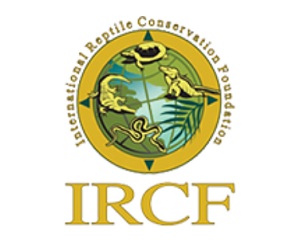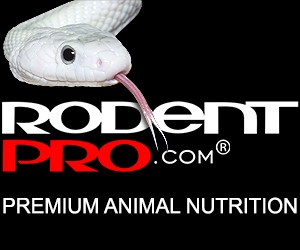
- Stuart's Milk Snake
- Lampropeltis triangulum stuarti
- Size:
- Hatchling: 8 - 10 in.
- Adult: 38 - 46 in.
- Scalation:
- Dorsal: 21 rows
- Ventral: 219 - 242
- Sub caudal: 49 - 59
- Infra labial:8 - 11
- Supra labial: 7 - 8
- Anal Plate: Single
|

Photo courtesy Rich Zuchowski
click to enlarge |
Written By John Cherry
Coloration
A richly colored tri-colored Milksnake with wide red rings in the triads.
Head:
Snout black with a narrow white V .
Dorsal:
19 - 28 red body rings with little black tipping, white scales will normally have some black tipping.
Ventral:
All rings cross the body, Black and white rings will sometimes have reverse color encroaching, with red rings displaying very little if any tipping.
Range:
Pacific slopes of El Salvador, Honduras, Nicaragua And Northwestern Costa Rica.
Habitat:
Dry tropical forests and coastal plains.
Prey:
In captivity these animals fair very well on a diet of lab. raised mice. Juveniles are extremely voracious feeders. In the wild they feed on lizards and small rodents as available.
Behavior:
This is a species that does well in captivity. It is extremely robust and easy to care for in all respects.
Breeding:
Breeding in captivity is achieved in the same manner as with all colubrids using the
following as a guideline. Towards the end of October cease feeding totally, allowing at least 2 -3 weeks at normal temperature for clearing of the gut. Then gradually reduce the ambient tempeture inside the cage to the lower 50's and maintain for a period of 3 months. Be sure and provide clean water and systematically check animals for general condition and welfare during this period. After brumation and the animals are brought back up to optimum temperature of 78 - 84 degrees, feeding should resume for approx. three weeks and the pair should be placed together under supervision for short periods of time until copulation can be confirmed. An egg laying chamber partially filled with damp vermiculite or sphagnum moss is helpful. Eggs should be removed immediately after laying and placed in damp vermiculite for the incubation period of 59 - 68 days at temperatures of 80 - 83 degrees.
NOTE : This species as juveniles display exactly the coloration they will have as adults. Unlike a lot of animals " what you see is what you get ". Without specific locality information this species can be extremely hard to discern from several other Tropical Milksnakes.
Literature Cited:
Stebbins,Robert C. 1985 second editition revised. A field guide to Western Reptiles and Amphibians. Houghton Mifflin Company
Cherry, John & Cindy - Field & Breeding Notes

Photo by
Click to Enlarge |

Photo by
Click to Enlarge |
|
|
Sponsored Link
New & Updated Business Listings
Looking for a reptile or amphibian related business? A reptile store, breeder, importer,
maunfacturer or supplier? Our business directory lists some of the most popluar herp businesses in the world.
| Locate a reptile or amphibian business by name:
|
|
Recent Milk Snake Forum Forum Posts
• Scott Ballard Provided A Wealth Of Info, posted by Ameron
• Central America Milksnake Dilemma, posted by Ameron
• Retun to Forum / New Stuart's Milksnake , posted by Ameron
• Eggs ok?, posted by highley1980
• Splotched Sinaloan Variety, posted by bslugger551
• Splotched/Bullseye Sinaloans, posted by bslugger551
• Is my milk snake is getting TOO HOT?, posted by darbellah
• New owner looking for advice, posted by Irishfran
• New adoption biting and chewing fingers, posted by ajcur17
• Help*** Our milksnake won’t eat., posted by KieranSnake
• "trouble" with my milk snake, posted by kedjkd
• L. annulata (Mexican Milk) temps, posted by JJJ
• Nice neonate clutch..., posted by DavesterII
• Wanted: Vivid Reptile Line Hondurans, posted by VigorStu
• Hypo Honduran Comparison, posted by bslugger551
Recent Milk Snake Classifieds:
- WANTED Milksnakesall spe...
- 11 Vanishing Pattern Hyp...
- 11 Black Milks 2024
- 12 Stuarts Milks 2024
- 02 Hypo Hondurans from E...
- 11 Hondurans 2024 Anerth...
Banner Pool
|












